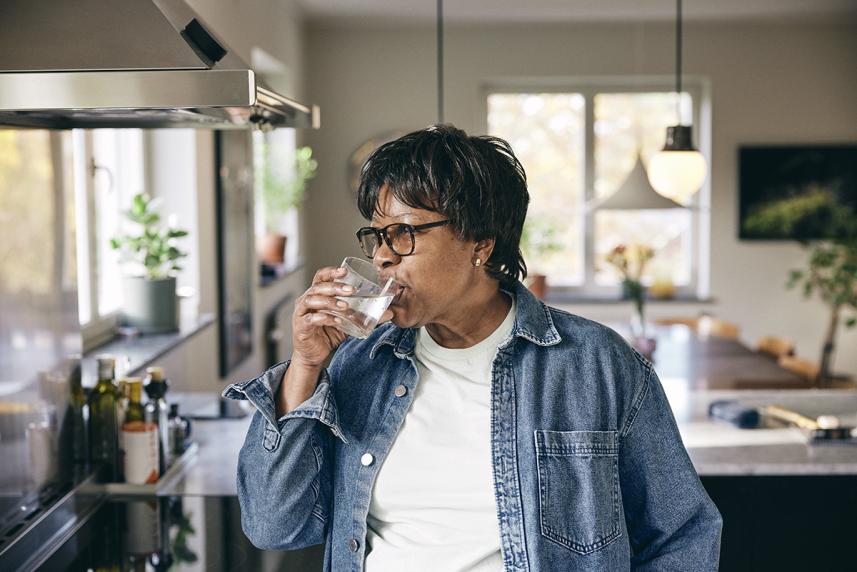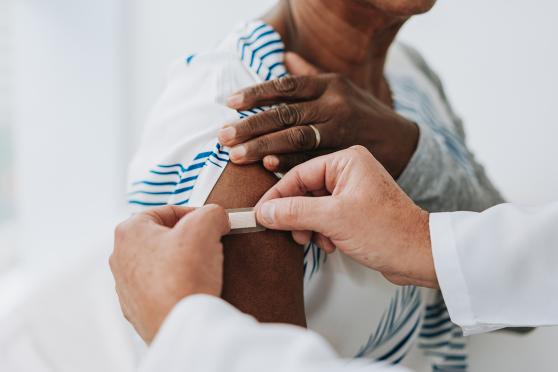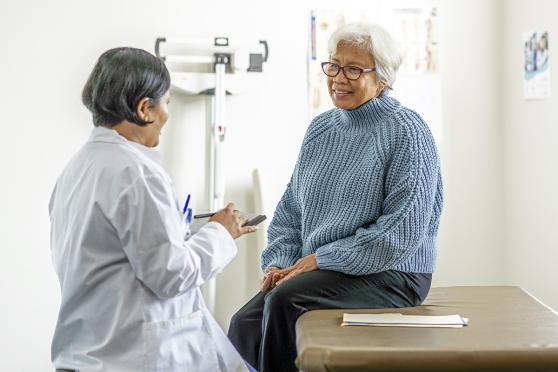What to expect when you sign up for a colonoscopy
Does the thought of a colonoscopy make you nervous? Here’s a look at what to expect, and how to make the most of this life-saving exam.

If you’re signed up for a colonoscopy this year, give yourself a pat on the back: Colorectal cancer screenings, when performed regularly, can help find cancer early, when it’s easier to treat. In other words, they could save your life.
In fact, colorectal cancer is the third-leading cause of cancer-related deaths in men and women in the United States, according to the American Cancer Society. And every year, approximately 1 in 23 American men and 1 in 26 women are diagnosed with it.
Everyone between the ages of 45 and 75 should receive regular colorectal cancer screenings. Those with a higher risk for colon cancer because of family history or conditions such as Crohn’s disease may need to start screenings sooner. Your doctor will be able to help you determine what kinds of screenings are best for you, and when they should be performed.
While there are different screening options available now, including stool-sample tests that check for signs of cancer, the colonoscopy remains the most comprehensive, gold-standard screening.
Yet anxiety about the rigorous pretest preparation for cleansing your colon still keeps many people away from this life-saving exam. This can include laxatives and altering your food intake by fasting or consuming only liquids.
These feelings are valid. And yet, there’s really nothing to fear, says Yale Medicine gastroenterologist Xavier Llor, M.D., Ph.D., medical director of the Colorectal Cancer Prevention Program.
“Afterward, people always wonder what they were so worried about,” says Dr. Llor. “They always feel the test was worth having.”
What exactly will the doctor do?
A colonoscopy lasts roughly 20 minutes and usually is performed while you’re sedated. The doctor inserts a small, flexible tube with a camera at the end (called a scope) into the colon via the rectum to examine the full length of the colon. The doctor may also inflate your intestine with gas to examine the tissues more thoroughly.
This procedure allows doctors to uncover hidden problems in your intestine and remove abnormal growths, called polyps, that could become cancerous. If nothing is found, a follow-up appointment isn’t required for 10 years.
So what’s the catch? To ensure doctors can catch cancer or suspicious growths, there can’t be any waste in your intestines. That’s where the infamous preparation comes in. Instructions differ among physicians, but you’ll be expected to pick up special supplies and carefully follow the doctor’s guidelines and timetable.
“The only way you can have a high-quality colonoscopy is with a clean intestine, so if you don’t finish the prep, a huge effort is wasted,” warns Dr. Llor.
How to prepare for the prep
A few days before the colonoscopy, you’ll stop eating high-fiber foods that are tough to cleanse from the bowel. These foods can include:
- Nuts
- Seeds
- Certain fruits with edible seeds or skins (like strawberries and apples)
- Deep red or purple foods that can leave a stain that looks like blood
You’ll replace those with the low-fiber foods your doctor recommends.
What the big prep involves
The most important thing to know regarding preparation: It varies by doctor and patient. Be sure to consult with yours about what to expect.
As far as the timetable goes for prep, that varies too. Typically, you’ll stop eating solid foods and switch to a clear liquid-only diet the day before the exam. And then in the hours leading up to the procedure, you’ll start taking laxatives as prescribed by your doctor. They can come as pills, a liquid, or as powder that can be mixed with water at home.
In many cases, you’ll consume half of your dose or formula the night before, chased with lots of clear liquids. Pulp-free juices, flavored or plain water, sodas, seltzer, Jell-O, ice pops, and bouillon soup are all acceptable. Just don’t eat or drink anything with a deep red, purple, or blue color that could leave a stain on your colon that a doctor might mistake for an abnormality.
The goal of this prep is to flush your bowels, so you will experience diarrhea. It usually begins roughly an hour after you’ve finished the first half of the prep, and it can be urgent, so plan to be near a well-stocked and comfortable bathroom. You may not enjoy drinking additional liquid, but it helps keep you hydrated. (Diarrhea depletes the body’s natural salts.)
What to expect on screening day
You’ll continue with your clear, liquid-only diet. And about six hours before the colonoscopy (or the timing specified in your prep directions), you’ll finish the laxative drink. When your output is clear or slightly yellow and completely free of solids, you’re done. You won’t be allowed to drink anything else after that.
Before you head in for the colonoscopy, be sure you know who will meet you there afterward. You won’t be released unless you’re accompanied by a designated driver.
When you arrive, you’ll don a hospital gown, hop onto a surgical bed, and be transported into the exam room. You’ll be asked to turn on your side with your knees drawn up, and the anesthesiologist will prepare your sedation.
Propofol is one of the more popular types of anesthesia for colonoscopies because it is fast-acting, safe in small amounts, and rapidly cleared from the body. If you’re anxious about sedation, talk to your doctors.
“The most common concern is that you’ll get too much sedation or won’t be able to wake up easily, but that really doesn’t happen,” says Dr. Llor. “People wake up fine and they usually feel great.”
During the colonoscopy itself
Once you’re safely sedated, the colonoscope is inserted into your rectum and threaded through your colon, making turns along the way. The journey ends where the large and small intestines meet, although some doctors may travel further if they suspect potential damage. As the tube is slowly withdrawn, the camera inspects every inch of the colon. If a growth or polyp is found, a special device in the scope can snip it off, seal the wound, and remove it for testing.
“In an uncomplicated case, it takes a minimum of seven minutes to draw the scope through the whole intestine,” says Dr. Llor.
When the screening is over, the scope is removed, the sedation ends, and you awaken.
Caring for yourself after a colonoscopy
After a colonoscopy, most people emerge alert and happy. In rare cases there can be some discomfort.
“If you have a history of irritable bowel and sensitive colon, the bloating from the remaining gas may make you feel uncomfortable for a few hours, sometimes days,” explains Dr. Llor.
And if a polyp was removed, there can be some bleeding in the stool. “Most of the time, though, it’s limited and doesn’t require any follow-up,” he adds.
Chances are, you’ll leave the screening feeling seriously hungry. But you can also leave feeling proud of yourself for taking such a big step in protecting yourself and your future.


